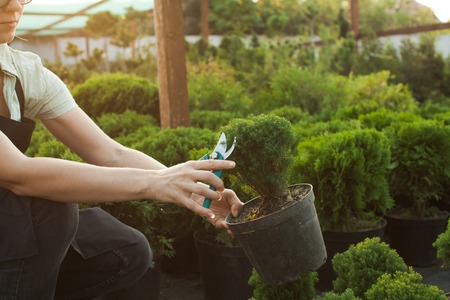An Introduction to Water Butts in Britain
Water butts have become an increasingly familiar sight in British gardens, reflecting a growing awareness of the need for sustainable water management. As climate change brings unpredictable weather patterns and periodic droughts to the UK, gardeners and homeowners are seeking practical solutions to conserve water while nurturing their outdoor spaces. Water butts offer a straightforward and effective way to collect and store rainwater, providing an environmentally friendly alternative to using mains supply for garden irrigation.
The importance of water butts in Britain extends beyond individual gardens. By capturing rainwater from roofs and other surfaces, these storage containers help reduce the demand on public water resources, particularly during dry spells or hosepipe bans. Additionally, using rainwater is often better for plants, as it is naturally soft and free from the chemicals found in treated tap water.
Over recent years, the popularity of water butts has surged across the UK. This trend is driven by a combination of environmental consciousness, rising water bills, and encouragement from local councils and gardening groups. Many households now view water butts as an essential feature of a responsible, eco-friendly garden. In this guide, we’ll explore the history of water butts in Britain, practical advice for installation, and their broader impact on sustainable gardening practices.
2. A Brief History of Water Collection in the UK
Rainwater harvesting in Britain is by no means a modern concept. The practice stretches back centuries, rooted in necessity and shaped by the country’s famously unpredictable weather. In earlier times, before the advent of piped mains water, British households relied heavily on rainwater for their daily needs—drinking, cooking, cleaning, and, crucially, gardening.
During the 18th and 19th centuries, water scarcity was a pressing issue for many communities, particularly in rural areas. Simple collection systems such as wooden barrels or stone cisterns were positioned beneath roof eaves to capture runoff from thatched or slate roofs. These early water butts were invaluable during dry spells, ensuring a steady supply for vegetable patches and flower borders.
The Victorian era saw further refinement of these techniques. Cast iron and later ceramic butts became common in urban gardens as access to fresh water remained limited for working families. The use of water butts was not merely practical but was also recommended by gardening writers and household manuals of the day.
Evolution of Water Collection Methods
| Period | Collection Method | Materials Used |
|---|---|---|
| Pre-Industrial (pre-1800) | Direct roof runoff into containers | Wooden barrels, stone cisterns |
| Victorian Era (1800s) | Purpose-built water butts with gutters | Ceramic pots, cast iron tanks |
| Modern Day (20th–21st Century) | Integrated rainwater systems with filtration | Plastic, recycled materials, advanced composites |
The Traditional Role of Water Butts in British Gardens
Historically, water butts have been more than just functional; they are woven into the fabric of British horticultural tradition. From stately homes to modest allotments, the humble butt symbolises self-sufficiency and environmental awareness long before these became buzzwords. Even today, many gardeners recall grandparents filling watering cans from heavy oak barrels or tin tanks nestled at the end of the garden shed.
A Cultural Legacy That Endures
The persistence of water butts in UK gardens highlights a collective respect for resourcefulness and sustainability—a legacy inherited from generations past. As modern concerns about climate change and water conservation grow, looking back at these historical practices offers valuable lessons for contemporary gardeners seeking to tread lightly on their patch of Britain.

3. Selecting the Right Water Butt for Your Garden
Choosing the ideal water butt for your British garden is a key step in making rainwater harvesting both efficient and visually pleasing. There are several types of water butts on the market, ranging from classic barrel shapes to slimline, wall-mounted options that suit smaller urban spaces.
Types of Water Butts
The traditional round barrel remains a popular choice for its ample capacity and timeless appearance, blending well with cottage gardens or period properties. Slimline water butts are particularly useful for compact gardens or patios, offering practical storage without sacrificing space. For those seeking a more contemporary look, square or decorative water butts can complement modern landscaping.
Considerations for British Weather
The unpredictable British climate means you’ll want a water butt that can withstand frequent rainfall and occasional frost. Look for models made from UV-stabilised plastic or robust recycled materials to ensure durability in all seasons. Some water butts come equipped with child-safe lids and integrated filters to prevent debris or pests from contaminating stored water—a sensible addition given the prevalence of autumn leaves and garden wildlife.
Capacity Matters
Capacity should be matched to both the size of your roof area and garden needs. A standard 200-litre butt will suffice for most small to medium gardens, while larger properties may benefit from linking multiple butts together using connector kits. This modular approach is particularly effective in regions with heavy rainfall, ensuring you capture as much water as possible during wet spells.
Material Choices
Most modern water butts are crafted from recycled plastic—lightweight, weather-resistant, and easy to install. Wooden barrels offer a rustic charm but require more maintenance to prevent rot. Stone-effect water butts provide an elegant alternative for formal gardens, mimicking natural materials while retaining practicality.
Positioning for Maximum Efficiency
The optimal location is typically close to a downpipe so rainwater can be easily diverted from your roof. Consider how you’ll access the tap: placing the butt on a stand allows you to fill watering cans with ease and improves gravity-fed flow if connecting to irrigation systems. Also, think about how the design fits with your local garden style—whether nestled among borders, tucked beside a shed, or placed discretely behind fencing.
Blending Function with Aesthetics
A carefully selected water butt not only supports sustainable gardening practices but also complements the unique character of British gardens—from urban courtyards to sprawling country plots. By weighing up type, capacity, material, and placement in light of local conditions and design preferences, you can make an informed choice that serves both your plants and your outdoor space for years to come.
4. Step-by-Step Installation Guide
Installing a water butt in your British garden is a straightforward process, but attention to detail ensures efficiency, longevity, and safety. Below is a practical walkthrough tailored for the UK climate and typical garden setups, including solutions to common challenges.
Choosing the Right Location
Select a spot close to a downpipe from your house, shed, or greenhouse. Ensure the ground is level and firm; if not, use paving slabs or compacted gravel as a base. Avoid placing your water butt under trees where falling debris could clog filters.
Required Tools & Materials
| Item | Purpose |
|---|---|
| Water butt with lid and tap | Main storage unit for rainwater collection |
| Stand or platform | Elevates the butt for easy access to the tap |
| Diverter kit | Connects downpipe to water butt |
| Saw (for plastic/metal) | To cut into the downpipe if necessary |
| Spirit level | Ensures correct alignment and stability |
| Screwdriver/drill | Secures diverter and fittings |
| PPE (gloves, goggles) | Personal protection during installation |
Installation Steps
- Prepare the Base: Use a spirit level to check that your chosen area is flat. Lay paving slabs or gravel if needed, ensuring stability—this prevents tipping over when the butt is full.
- Assemble the Stand: Place your stand or platform securely on the base. This allows you to fill watering cans easily from the tap at the bottom of the butt.
- Position the Water Butt: Situate the water butt on its stand so it lines up closely with your chosen downpipe.
- Install the Diverter Kit: Follow manufacturer instructions—usually, this involves sawing a section from your downpipe at an appropriate height and fitting the diverter. Connect the hose from diverter to inlet hole in the water butt.
- Secure All Fittings: Check that all seals are tight to prevent leaks. Attach any overflow pipes leading away from buildings or sensitive areas.
- Add Safety Features: Ensure your water butt has a secure lid to prevent accidents involving children, pets, or wildlife. Consider child-proof locks or mesh covers if necessary.
- Test the Setup: Pour water into the downpipe above the diverter and check for leaks or blockages. Adjust connections as required.
Troubleshooting Common Challenges
| Issue | Possible Solution |
|---|---|
| Butt not filling up as expected | Check diverter connection for blockages or improper fit; clear debris from gutters and downpipes regularly. |
| Butt leaning or unstable when full | Reassess base stability; reinforce with additional slabs or gravel as required. |
| Mosquitoes or algae growth inside butt | Keep lid closed tightly; clean out once per season; consider adding barley straw bags as a natural deterrent. |
| Taps leaking or difficult to turn on/off | Tighten fittings with a spanner; replace washers if worn; lubricate moving parts as needed. |
Safety Considerations Specific to UK Gardens
- If installing near public pathways or communal spaces, mark off work areas clearly during installation.
- Avoid placing heavy butts on wooden decking without reinforcement—they can weigh several hundred kilograms when full.
- If frost is forecast, empty part of your water butt or disconnect hoses to prevent damage from freezing temperatures.
- If you have young children, always use lockable lids or mesh guards for additional peace of mind.
This careful approach will help ensure your water butt delivers years of reliable service while blending seamlessly into your British garden’s landscape and routines.
5. Maintenance and Troubleshooting Tips
Keeping your water butt in good nick is essential for ensuring a steady supply of clean, usable rainwater throughout the year. Regular maintenance not only prolongs the life of your water butt but also helps prevent common issues such as stagnation, algae growth, and blockages that can impact water quality and system efficiency.
Regular Cleaning and Inspection
Give your water butt a thorough clean at least once a year—preferably in early spring before the main gardening season kicks off. Empty the barrel completely, use a stiff brush to scrub the interior, and rinse with fresh water. This helps remove any build-up of silt or debris. While you’re at it, check for cracks or leaks and ensure all fittings are secure.
Preventing Stagnation
Stagnant water can become a breeding ground for mosquitoes and other pests, as well as develop unpleasant odours. To prevent this, make sure your water butt has a tight-fitting lid to keep out debris and wildlife. If possible, use the collected water regularly so it doesn’t sit for too long. Consider adding a small piece of mesh over the inlet to catch larger leaves and twigs before they reach the tank.
Managing Algae Growth
Algae thrive in sunlight, so position your water butt in a shaded spot if you can. If that’s not possible, consider using an opaque or dark-coloured barrel to block light penetration. For persistent algae problems, specialist water butt treatments are available at most garden centres—just be sure they’re safe for plants if you plan to use the water on edibles.
Dealing with Freezing Temperatures
British winters can be harsh on outdoor water storage. To avoid damage from freezing, fit your water butt with an insulating jacket or wrap it in bubble wrap during cold snaps. Make sure there’s enough space at the top for ice expansion by not filling it to the brim before winter sets in. If you expect a hard freeze, consider temporarily draining your butt to prevent cracks.
Unblocking Gutters and Downpipes
A blocked gutter or downpipe can render your water butt useless and even cause overflow or flooding near your foundations. Clear gutters of leaves and moss at least twice a year—in autumn after leaf fall and again in spring. Check that diverter valves are clear and functioning properly; a quick poke with a stick often does the trick if you notice reduced flow.
Summary: Keeping Your Water Butt Working Well
With regular attention—cleaning, checking for blockages, managing algae, and protecting against frost—your water butt will serve you faithfully through many British seasons. These simple steps go a long way towards making rainwater harvesting both practical and rewarding in any garden.
6. Environmental Impact and Community Benefits
In British gardens, the use of water butts extends far beyond individual convenience; it represents a collective step towards environmental stewardship. By capturing and storing rainwater, gardeners actively contribute to water conservation—an increasingly vital practice as the UK faces unpredictable weather patterns and the risk of summer hosepipe bans. Every litre of rainwater used from a butt is a litre saved from mains supply, reducing pressure on local water resources and treatment infrastructure.
Supporting Wildlife in Urban and Rural Spaces
Water butts also play a subtle but significant role in supporting garden biodiversity. Rainwater is naturally softer and free from chlorine or other chemicals found in tap water, making it gentler for plants and more appealing to pollinators such as bees and butterflies. In urban environments where natural habitats are fragmented, even small water sources can offer critical support for birds and insects during dry spells, fostering healthier ecosystems at a neighbourhood scale.
Community Engagement and Shared Responsibility
The widespread adoption of water butts fosters a sense of shared responsibility across British communities. Many local councils encourage their use through subsidies or educational campaigns, recognising that collective action amplifies impact. Whether in allotments, community gardens, or private plots, the sight of rain barrels signals a commitment to sustainable living—a visual reminder that individual actions matter within the broader context of climate resilience.
Aligning with National Sustainability Goals
On a national level, using water butts dovetails neatly with government initiatives aimed at reducing carbon footprints and building climate-adaptive infrastructure. As households reduce reliance on energy-intensive mains water systems, they help lower emissions associated with water processing and distribution. This simple act not only conserves precious resources but also embodies the practical side of Britain’s journey towards sustainability—rooted in tradition yet responsive to contemporary environmental challenges.
7. Top Tips from Gardener’s Corner
Drawing on the collective wisdom of seasoned British gardeners, making the most of your water butt is as much about savvy technique as it is about tradition. Below are practical pointers and local hacks to keep your rainwater harvesting system working efficiently throughout the year.
Keep Your Water Butt Clean
Veteran gardeners recommend giving your water butt a thorough clean at least once a year, ideally in early spring before heavy use begins. This prevents algae build-up and keeps water fresh for longer. Use a stiff brush and a dash of vinegar or eco-friendly cleaner, rinsing well before refilling.
Choose the Right Location
Place your water butt beneath a downpipe that catches the most roof runoff. South-facing spots are best avoided as sunlight encourages algae growth; instead, opt for shaded or partially sheltered corners where possible.
Fit a Fine Mesh Filter
A simple but effective insider tip is to install a fine mesh filter over the inlet. This keeps out leaves, twigs, and insects—reducing maintenance and improving water quality for your plants.
Connect Multiple Butts
If you have space, connect two or more water butts in series using connector kits. This boosts storage capacity and ensures that rainwater collected during wet spells lasts through drier periods—a must for larger gardens or allotments.
Use Water Wisely
Experienced growers suggest watering early in the morning or late evening to minimise evaporation. Direct rainwater to the roots rather than foliage to conserve supplies and promote healthy plant growth.
Share and Swap Water Butt Wisdom
Many local gardening clubs and community groups hold annual workshops or swap meets for water butt accessories and spare parts. Joining these not only keeps you stocked up but also connects you with neighbours keen to share advice or lend a helping hand.
By applying these tried-and-tested strategies from British gardens up and down the country, you’ll ensure your water butt remains an efficient, reliable fixture for years to come—saving money, conserving resources, and strengthening community ties all at once.


